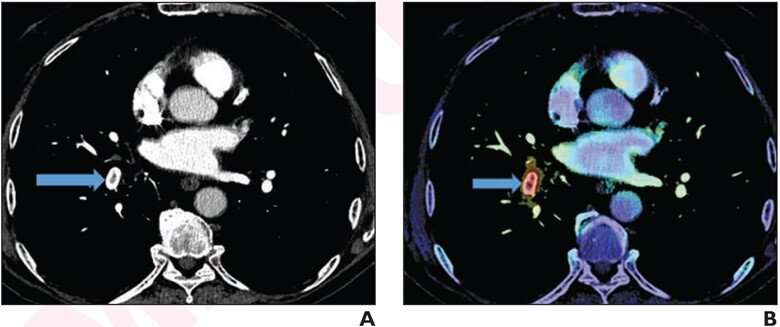
According to an article in American Journal of Roentgenology (AJR), a worklist reprioritization tool with artificial intelligence reduced both report turnaround time and wait time for pulmonary embolus-positive CT pulmonary angiography examinations.
“By assisting radiologists in providing rapid diagnoses, the artificial intelligence (AI) tool could potentially enable earlier interventions for acute pulmonary embolus (PE),” concluded lead researcher Kiran Batra, MD, from the department of radiology at University of Texas Southwestern Medical Center in Dallas.
Batra and colleagues’ study included patients who underwent CT pulmonary angiography (CTPA) before (from October 1, 2018–March 31, 2019) and after (from October 1, 2019–March 31, 2020) implementation of an FDA-approved AI tool that reprioritized CTPA examinations atop radiologists’ reading list if acute pulmonary embolus (PE) was detected. Timestamps from EMR and dictation systems were then utilized to determine three time periods: wait (examination completion to report initiation); read (report initiation to availability); and report turnaround (sum of wait and read). Time periods for PE positive reports, using final imaging for reference, were compared between periods.
Ultimately, the authors’ AI-driven worklist reprioritization tool was associated with significantly shorter report turnaround (47.6 vs. 59.9 mins) and wait (21.4 vs. 33.4 mins) times—though no significant difference in reading time (26.3 vs. 26.5 mins)—for CTPA reports positive for acute PE, compared to reports from before AI implementation.
“During regular hours, the reduction in wait time was observed for examinations with routine—but not urgent or stat—priority,” noted the researchers.
More information:
Kiran Batra et al, Radiologist Worklist Reprioritization Using Artificial Intelligence: Impact on Report Turnaround Times for CTPA Examinations Positive for Acute Pulmonary Embolism, American Journal of Roentgenology (2023). DOI: 10.2214/AJR.22.28949
Journal information:
American Journal of Roentgenology
Source: Read Full Article
